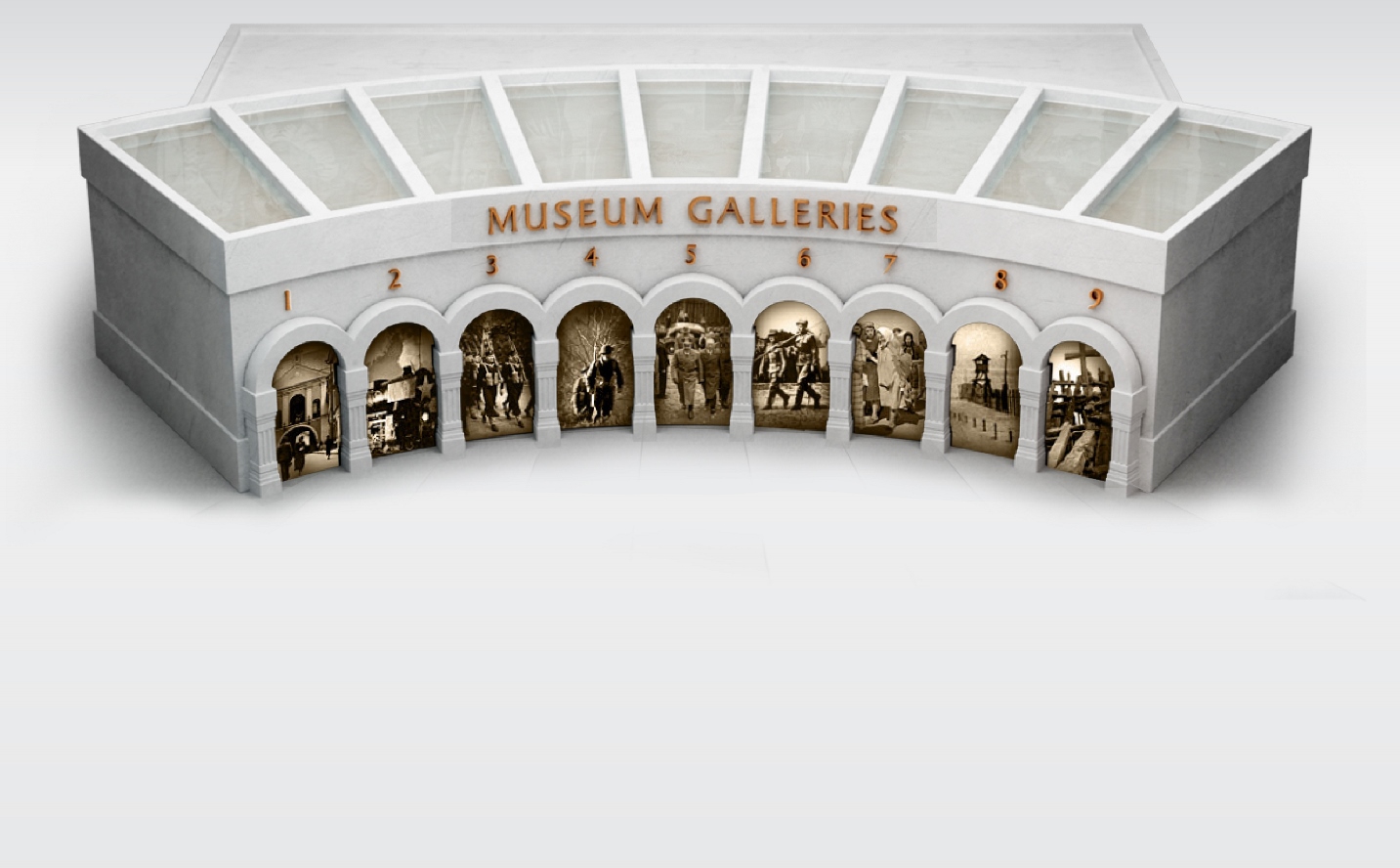



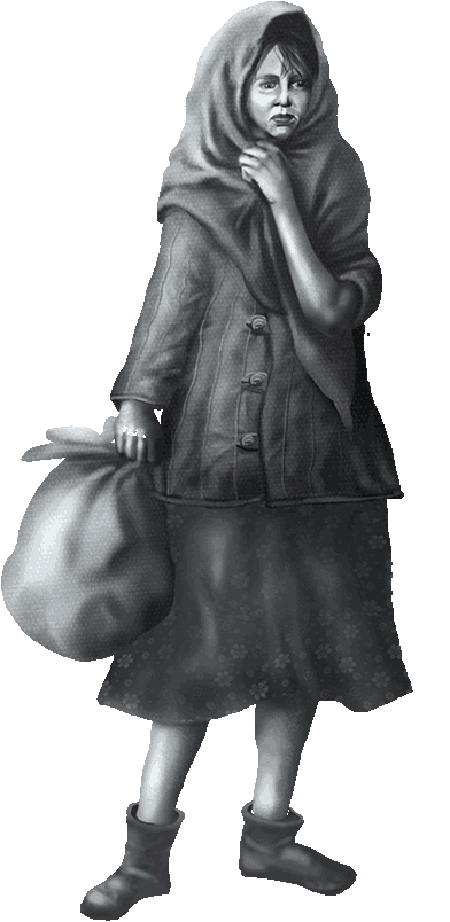
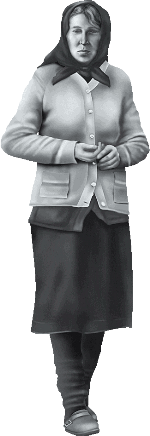


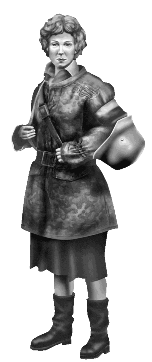

Freed to fight
Unvanquished
Tyranny
for survival
Refugees
Counterstrike
Diaspora
Occupation
Borderlands

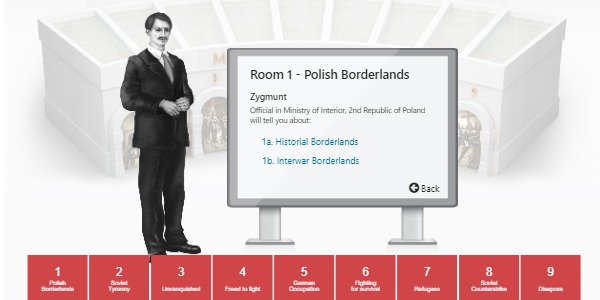


Back
Zygmunt
Official in Ministry of Interior, 2nd Republic of Poland
will tell you about:
Room 1 - Polish Borderlands
Freed to fight
Unvanquished
Tyranny
for survival
Refugees
Counterstrike
Diaspora
Occupation
Borderlands

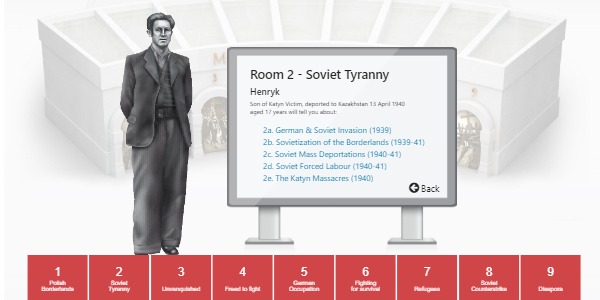


Back
2e. The Katyn Massacres (1940)
2d. Soviet Forced Labour (1940-41)
2c. Soviet Mass Deportations (1940-41)
2b. Sovietization of the Borderlands (1939-41)
2a. German & Soviet Invasion (1939)
Room 2 - Soviet Tyranny
Son of Katyn Victim, deported to Kazakhstan 13 April 1940
aged 17 years will tell you about:
Henryk
Freed to fight
Unvanquished
Tyranny
for survival
Refugees
Counterstrike
Diaspora
Occupation
Borderlands

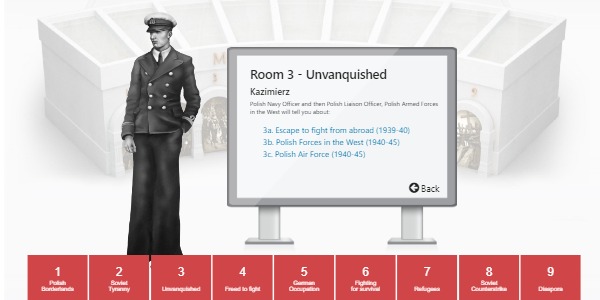


Back
3c. Polish Air Force (1940-45)
3b. Polish Forces in the West (1940-45)
3a. Escape to fight from abroad (1939-40)
Room 3 - Unvanquished
Polish Navy Officer and then Polish Liaison Officer, Polish Armed Forces
in the West will tell you about:
Kazimierz
Freed to fight
Unvanquished
Tyranny
for survival
Refugees
Counterstrike
Diaspora
Occupation
Borderlands

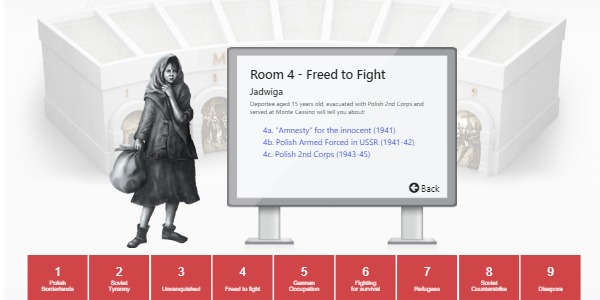
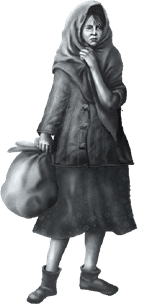

Back
4c. Polish 2nd Corps (1943-47)
4b. Polish Armed Forces in USSR (1941-42)
4a. "Amnesty" for the innocent (1941)
Room 4 - Freed to Fight
Deportee aged 15 years old, evacuated with Polish 2nd Corps and
served at Monte Cassino will tell you about:
Jadwiga
Freed to fight
Unvanquished
Tyranny
for survival
Refugees
Counterstrike
Diaspora
Occupation
Borderlands

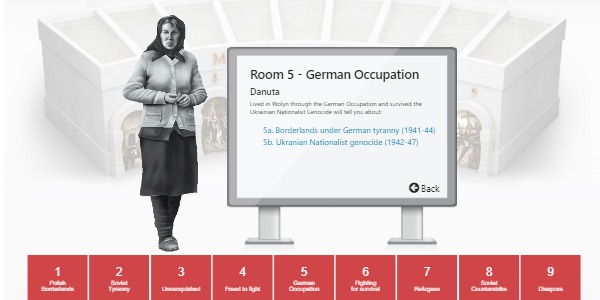


Back
5b. Ukranian Nationalist genocide (1942-47)
5a. Borderlands under German tyranny (1941-44)
Room 5 - German Occupation
Lived in Wolyn through the German Occupation and survived the
Ukrainian Nationalist Genocide will tell you about:
Danuta
Freed to fight
Unvanquished
Tyranny
for survival
Refugees
Counterstrike
Diaspora
Occupation
Borderlands




Back
6b. Polish forces under Soviet command (1943-45)
6a. Continued exile in the USSR (1942-46)
Room 6 - Fighting for Survival
Soldier, First Polish Army (Berling’s Army) will tell you about:
Jan
Freed to fight
Unvanquished
Tyranny
for survival
Refugees
Counterstrike
Diaspora
Occupation
Borderlands

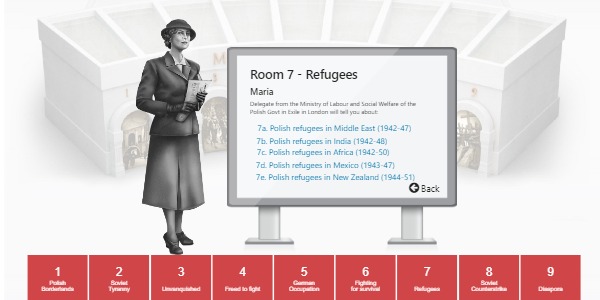


Back
7e. Polish refugees in New Zealand (1944-51)
7d. Polish refugees in Mexico (1943-47)
7c. Polish refugees in Africa (1942-50)
7b. Polish refugees in India (1942-48)
7a. Polish refugees in Middle East (1942-47)
Room 7 - Refugees
Delegate from the Ministry of Labour and Social Welfare of the
Polish Govt in Exile in London will tell you about:
Maria
Freed to fight
Unvanquished
Tyranny
for survival
Refugees
Counterstrike
Diaspora
Occupation
Borderlands

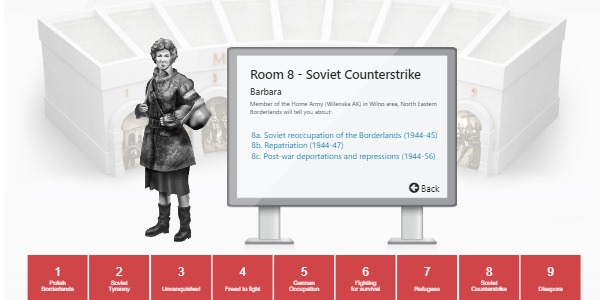


Back
8c. Post-war deportations and repressions (1944-56)
8a. Soviet reoccupation of the Borderlands (1944-45)
Room 8 - Soviet Counterstrike
Member of the Home Army (Wilenska AK) in Wilno area, North
Eastern Borderlands will tell you about:
Barbara
Freed to fight
Unvanquished
Tyranny
for survival
Refugees
Counterstrike
Diaspora
Occupation
Borderlands

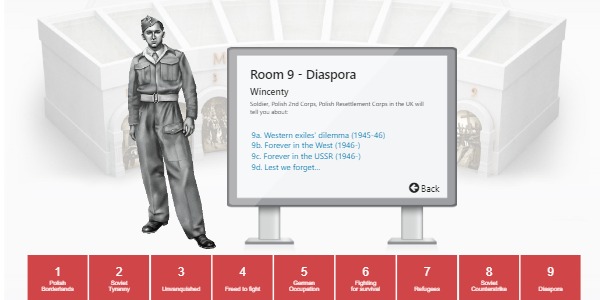


Back
9c. Forever in the USSR (1946-)
9b. Forever in the West (1946-)
9a. Western exiles' dilemma (1945-46)
Room 9 - Diaspora
Soldier, Polish 2nd Corps, Polish Resettlement Corps in the UK will
tell you about:
Wincenty
Freed to fight
Unvanquished
Tyranny
for survival
Refugees
Counterstrike
Diaspora
Occupation
Borderlands
These permanent exhibitions explore what life was like in Poland’s eastern “Kresy” Borderlands before World War II, the fight for survival and freedom by Polish citizens during the War under both Soviet and Nazi occupation in the Borderlands and in forced exile as military and civilians dispersed around the world during and after the War.
About the Project
Welcome to the Museum Galleries and to their newly launched English overviews.
These permanent exhibitions explore what life was like in Poland’s eastern “Kresy” Borderlands before World War II, the fight for survival and freedom by Polish citizens during the War under both Soviet and Nazi occupation in the Borderlands and in forced exile as military and civilians dispersed around the world during and after the War.
Each Gallery has been curated, contributed to and reviewed by a panel of historical experts. There are 29 Rooms planned in total, organised into the 9 Galleries or sections displayed in this introductory section. The Polish versions of 8 of the Rooms have already been opened and these are progressively being translated into English. Work is also continuing on the remaining 21 Rooms, which will be opened progressively over the coming years.
In the meantime, the English language overviews of all 29 Rooms have now been opened. The Rooms in each of the 9 Galleries are introduced and overviewed by a contemporary Polish character whose identity is fictional, but who is based on a composite of real persons. Each of these characters presents an introductory overview of the Rooms in their Gallery, via an audio narration and a selection of photographs, documents and testimonies.
SPONSOR
The English Galleries Overview has been made possible from funds provided by the Ministry of Foreign Affairs of the Republic of Poland in 2012
SINCERE THANKS TO SUPPORTING PARTNERS
We gratefully acknowledge the support of SBS (Special Broadcasting Service) in Sydney for providing us with a reduced rate to record and post-produce the 29 narrative tracks.
We also gratefully acknowledge the narrative voice talent contributions by the actors of Sydney Polish theatre group “Teatr Fantazia” and of its director, Joanna Borkowska-Surucic, as well as of Sydney actor and lecturer Andrzej Siedlecki, who in addition provided recording and post-production services.
SINCERE THANKS TO OUR COLLEAGUES
We gratefully acknowledge the valuable work of the Kresy-Siberia project team led by Anna Pacewicz and supported by Stefan Wisniowski, Aneta Hoffman and Krystyna Szypowska as well as the services of I.T. firm Momint and graphic designer Sylwia Sukiennik.
We gratefully acknowledge the participation of the following Kresy-Siberia members who very kindly volunteered their time and expertise to research and write narrative texts, gather and upload photographs, documents, maps and survivor testimony excerpts.
| Contributor | Exhibition Rooms contributed to |
| Barbara Charuba | 7b) Polish Refugees in India (1942-48) |
| Alexandra Copley | 4a) “Amnesty” for the innocent (1941)
4b) Polish Armed Forces in USSR (1941-42 ) Plus additional Survivor Testimonies |
| Paul Digget |
2a) German and Soviet Invasion (1939)2b) Sovietization of the Borderlands (1939-41)2c) Soviet Mass Deportations (1940-41)2d) Soviet Forced Labour (1940-41)2e) The Katyn Massacres (1940) |
| Eva Dryanski | 3b) Polish Forces in the West (1940-45)
4c) Polish 2nd Corps (1942-45) |
| Greg Dryanski | 3b) Polish Forces in the West (1940-45)
4c) Polish 2nd Corps (1942-45) |
| Irena Lowe | 7e) Polish Refugees in New Zealand (1944-49) |
| Mark Ostrowski | 3b) Polish Forces in the West (1940-45)
9a) Western Exiles’ Dilemma (1945-48) 9b) Forever in the West (1946-) |
| Julian Plowy | 7d) Polish Refugees in Mexico (1943-47) |
| Krystyna Tomaszczyk | 7e) Polish Refugees in New Zealand (1944-49) |
| Janusz Tydda | 3c) Polish Air Force (1940-45) |


